#Double Suicide In Sonezaki
Explore tagged Tumblr posts
Text




Over the weekend, Meiko Kaji (梶芽衣子) appeared at the Pia Film Festival for a screening of Mainline To Terror (動脈列島) and Double Suicide In Sonezaki (曽根崎心中). The films were screened alongside many others as a part of an event commemorating the 100th birthday of director Yasuzo Masumura (増村保造). She was joined on stage for a Q&A by director Masaaki Kudo (工藤将亮) and talked about her experiences working with Masumura and some stories from her early days as an actress. Read more about the event here: https://eiga.com/news/20240915/13/ https://news.ntv.co.jp/category/culture/942425afba8e465b88825a5916b2e6c7
#Meiko Kaji#梶芽衣子#Yasuzo Masumura#増村保造#news#appearance#Masaaki Kudo#工藤将亮#Mainline To Terror#Double Suicide In Sonezaki#Love Suicides In Sonezaki#動脈列島#曽根崎心中
10 notes
·
View notes
Text
The double suicides that occurred on May 22, 1703 inspired Chikamatsu to write this play and thus The Love Suicides at Sonezaki made its debut performance on June 20, 1703
0 notes
Text
Blog Post #12: Double Suicide by Masahiro Shinoda
This was one film that I was definitely excited to watch because, going back to our class on Japanese culture, I was able to become quite familiar with the great Chikamatsu Monzaemon who was the pioneer of the double suicide genre in pre-modern Japan. He established the theme of Giri vs. Ninjo, which essentially translates to Duty vs. Emotion. Chikamatsu would usually depict two main characters who fall in love with each other and would often choose between fulfilling their duty of whatever specific job they have or pursuing their true love. However, because of strict societal pressures, these two lovers were unfortunately never able to pick aside due to the strong societal pressures they faced, causing them to, as a result, commit double suicide. I was really excited to see how directors would adapt this theme because Chikamatsu Monzaemon is arguably one of the most influential, if not the most, playwrights in Japanese history, so I was curious to see if this film was able to serve him justice or not.

Masahiro Shinoda’s film “Love Suicide” made in 1969 is based on a classic Japanese puppet play called "The Love Suicides at Sonezaki" by the great Chikamatsu Monzaemon. The film revolves around the tragic love affair between Jihei, a married paper merchant, and Koharu, a courtesan. Unable to be together in life due to societal constraints, they plan a double suicide as their only means of escape. The film is renowned for its stylized cinematography, intricate set designs, and exploration of themes such as love, desire, and societal norms in feudal Japan. I thought this added a great touch to the film because while I believe the emphasis was put on exploring the themes of duty vs. emotion, it kept me engaged through it’s unique directing tactics and engaging acting.
Diving more into how Chikamatsu’s style of Giri vs. Ninjo is explored in this film, it shows how the characters in the film grapple with their duty to conform to societal norms and expectations versus their personal desires and emotional needs. Jihei, as a married man with a family, has a duty to uphold his societal obligations by maintaining his marriage and providing for his family. However, his passionate love for Koharu conflicts with this duty, leading him to consider abandoning his responsibilities for the sake of his personal desires. This constant back-and-forth between duty and emotion is the main thing that drives these characters crazy. I think the film does an amazing job of delving deep into the theme of duty vs. obligation as it portrays the inner turmoil and external pressures faced by the characters as they navigate the rigid social structures and norms of feudal Japan while striving to pursue their personal desires and find emotional fulfillment. I thought it was a great film and did a wonderful job of paying homage to Japan’s most valuable playwright.
0 notes
Text

@baeddel this piqued my interest so I did some (very cursory) looking around!
While keeping in mind that it’s an anonymous source on the internet, going off of an excerpt of this:
A long time ago, according my grandfather, ever since the Heian practice there’s been this form of Buddhist exorcism: As other answers have mentioned, when a male infant is sickly and seems unlikely to survive early childhood, as it was believed that there was a diety that imparted illnesses only onto male children, would dress and be raised as a girl until the age of seven.
However, that in and of itself got me thinking about Bridget’s setting and that the theme of twins being seen as inauspicious is really common in japanese fiction and that I’m pretty sure in Bridget’s case the idea that identical twins were inauspicious was not the beliefs of a weird cult at all but something closer to local suspicion. In any case, this was an interesting read:
Within written japanese history, the oldest mention of twins and their being referred to as imigo, is in chapters 7 and 12 of the Nihon Shoki with regard to Emperor Keikō.
To quote:
Unto the emperor were born two sons. The first was called Ōusu-no-miko, the send Ousu-no-mikoto. Ōusu-no-miko and Ousu-no-mikoto were born on the same day of the water of the same womb. Because of this this Emperor Keikō was deeply anxious. And shouted “millstone” (usu) at them. [I don’t understand either, but that certainly is what’s written here and in other sources I can find.]”
Such as this was, that very younger twin, Ousu-no-mikoto, grew up to be the greatest hero of ancient Japanese history, who appears as the protagonist as of countless local myths, legends, and epic poetry, Yamato Takeru [He’s much less known outside of Japan, but it’s said that he was responsible for much of the Kofun-era northern expansion of the kingdom Yamato, and many successful campaigns against other early Japanese kingdoms such as Izumo, Kibi, and Koshi.] That in the life of such an epic and tragic figure as Yamato Takeru the text feels it necessary to deliberately point out the status of Takeru as a twin implies that the custom of dislike for twins had already taken root at the time [During the Asuka/Nara period].
The age in which twins were viewed with the most suspicion was the Edo period, and in particular upon the birth of fraternal twins, It was said that they bore the souls of a pair of lovers who died in double-suicide. It’s believed this suspicion dates to the spike in lovers’ suicides due to the popularity of “Sonezaki Shinjuu” by Monzaemon Chikamatsu, which moved Edo and Osaka to pass laws banning theatrical works featuring lovers’ suicides. [hyperlink mine] As a consequence, families would would report one child as a stillbirth, and abandon the child. Around the beginning of the Showa period, the custom of sutego-youji came about, where a newborn twin would be given away for adoption, and the foster parents would rais the child as their own, and the birth parents would swear to never come forward as the child’s parents (This was, of course, illegal).
Going by examples such as these, the custom was not rare, and not only twins but also children born to parents in an inauspicious year for them were also called imigo and given up as sutego-youji. The custom of naming potential imigo “Emiko” if a girl and “Sutekichi” if a boy, to rid them of their inauspicious fate continued up until the postwar period.
62 notes
·
View notes
Text
References of Classic Literatures in SAO
This post are thoughts I have on discord plus discussion with friends. I didn’t intend to publish this publicly but this was so well-received and a friend asked me to do so, so here it is.
Below are the classic works that I think SAO main arcs took many inspirations from:
1) Aincrad arc & Little Red Riding Hood
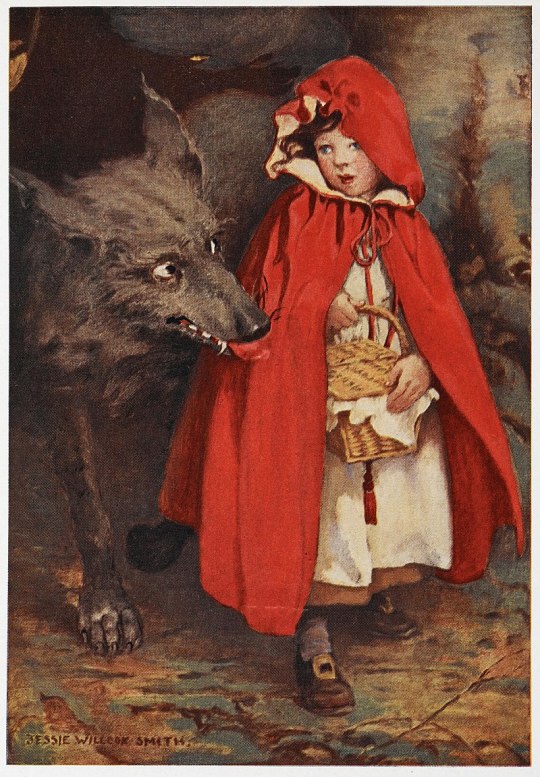
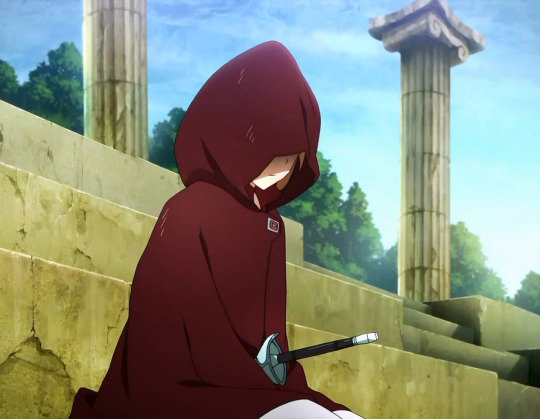
- Asuna is the Little Red Riding Hood, with Kirito as the brooding hunter who protected her and led her to a happy ending, and Kayaba is the wolf who disguised himself as Asuna's "Grandma" (aka her caretaker).
- Kayaba's nickname is the same name as the central character of Wuthering Heights (Heathcliff), both men created their world of their own obsessions (for OG Heathcliff is his love with Catherine, for Kayaba is his castle dream) and during that creation they ended up destroying a lot of lives, even innocent people involved.
2) Fairy Dance arc & A Midsummer Night’s Dream

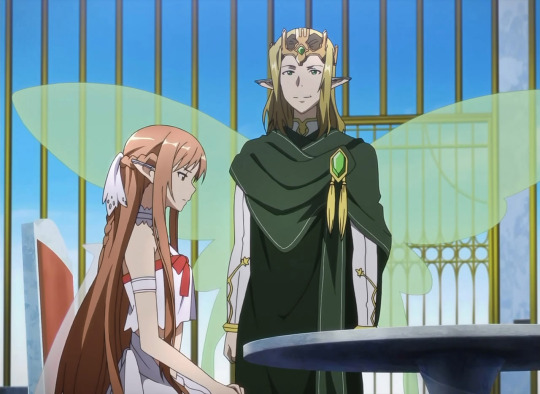
- Fairy Dance might take references from A Midsummer Night's Dream with Fairy King & Queen Oberon & Titania, who are a married couple under quarrels (Asuna and Sugou). The Fairy Dance arc also presents the themes of falling in love with the wrong person (Suguha/Leafa’s feelings for her brother/cousin Kazuto/Kirito) and unrequited love (Recon to Leafa, Leafa to Kirito) albeit in a different way than the original story.
3) Phantom Bullet arc & Sonezaki Shinjuu


- The classic kabuki play Sonezaki Shinjuu (The Love Suicides at Sonezaki) is a story about close acquaintances/families/lovers being tangled in conflicts of opposing sides, with the main couple performing a double suicide ending so they can be husband and wife in afterlife (just like Kyouji & Sinon). In SAO Kyouji tried to force the double suicide on Sinon but it failed.
3) Alicization arc volume 9-14, Eugeo’s story & The Little Prince
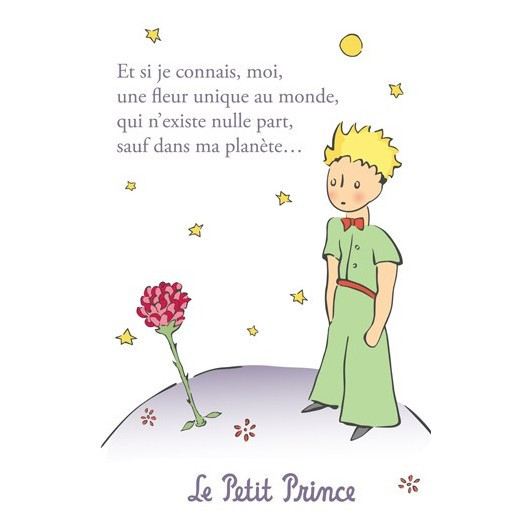

- When people see Alicization cast many might think of Alice in Wonderland first. However Eugeo's whole story in Alicization 1st half was most likely inspired from The Little Prince, with Eugeo as the Prince, Kirito as the Prince's wise old buddy and also the story's Narrator, and Zuberg as the Prince's Rose flower in his homeland which he loves so much but was separated from for so long. Only Alice S30 is the Alice in Wonderland, which is why she isn't the one Eugeo looked for.
- Friendship between the Narrator & the Prince is somewhat similar Kirito & Eugeo, in how the Prince is the only one who truly shares the world view of Narrator. In stories of his own journey, the Prince met a lot of adults, each of them showed their greed, selfishness, ugliness in their way, and the Prince's pure heart couldn't understand or withstand most of them. Just like Eugeo's naivety and pure heart can't accept even the littlest unfairness and evils of his world.
- The Prince thought he didn't love his rose in the correct way, and during his journey he knew his rose isn't so special because there are millions of beautiful roses on Earth. But later he learned that it's the time and space that he spent nurturing his rose that made the rose truly special and distinct. Isn't that similar to how Eugeo learned that love is giving, like nurturing flowers continuously?
- However, the Prince agonized then because he was in a place too far from his home and he left his rose for too long that it might have been eaten, like the distance and long pining towards the Alice in Eugeo's past that killed him inside, while his childhood has long gone.
- In The Little Prince's ending, the prince followed a poisonous snake's offer that if he lets it bite him, he would be able to return to his planet with his beloved rose (Quinella's deal, anyone?). The narrator realized what would really happen but couldn't stop the Prince. Before following that offer, the Prince told the Narrator please look at the stars to remember him, if it looks like he has died, it is only because his body is too heavy to take with him to his planet. The next day, the Prince's body couldn't be found and in his later journey, the Narrator ask the readers if any of them have seen the Prince. In Eugeo's story though, instead of creating an ambiguous ending, Reki presented both ends of the Prince's fate literally. Eugeo died in a sacrifice of his choice, and at the same time went into the light with the little Alice in his past (aka the Little Prince's rose).
- Kirito, just like how the Narrator who believed the Prince didn't die, continued to live in his own world of darkness like the time he spent with Eugeo hasn't gone.
4) Alicization volume 13-18, Alice Synthesis 30′s story & Alice in Wonderland

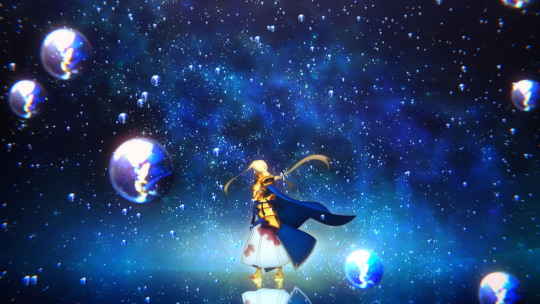
- Alice Synthesis 30, from an empty knight who has no knowledge of the world with a forced Knight identity, was thrown to the unknown in War of Underworld and had to fight off everything and figure her self-identity out on her own, has parallels with Alice in Wonderland. Original Alice fell into a rabbit hole into Wonderland when she followed the White Rabbit, while Alice S30 fell from Floor 85 of the Cathedral when she fought after Kirito, both Alices learned about the mess that is happening in the world they're in after this.
- The original story is more about all kinds of creatures and humans in Wonderland rather than just about Alice herself, while War of Underworld is also more about people participating in the War rather than just about Alice S30.
- Kirito is the cheshire cat who guided her somewhere along the way but left her on her own device at some point. There are pig-lookalike creatures called "Rath" in the original Wonderland story, and in SAO we have RATH company who is monitoring project Alicization as well as the pig-lookalike Orcs in WoU. In many versions of Alice in Wonderland the stories involve a coup d'état towards a tyrant queen, in Alicization we have a Quinella as similar type of ruler whom Alice S30 and her friends fought against.
- At the end of both stories Alices left the mess in their "Wonderland" to get to real world. Though for OG Alice it's getting back to reality, while for Alice S30 she just got thrown to another "Wonderland" where she has even less attachment to as well as being shunned by most other humans without being able to go back to the UW she knows.
5) Kirito’s character arc in Alicization & Yu Boya and Zhong ziqi:
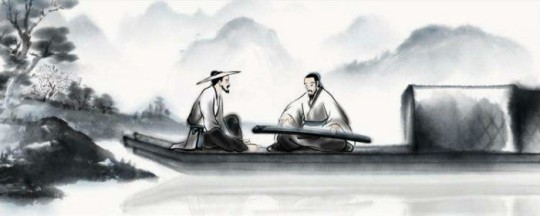
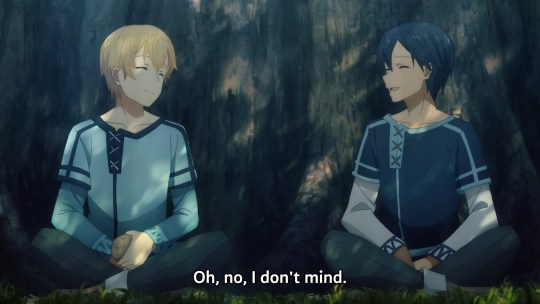
Kirito's character arc in Alicization was inspired by the story of Yu Boya & Zhong Ziqi, whose story has invented the words 知音知己 ("2 souls who understanding each other's tone & self the most") which usually get translated to English as "bosom friends", Chinese usually called them the epitome of friendship/ companionship. In Japan their names are translated as "Haku Ga" & "Shou Shiki".
Full story can be found here:
http://chineseaesop.blogspot.com/2012/09/yu-boya-and-zhong-ziqi-romance-of-guqin.html
Summary: Boya was an accomplished statesman from the Kingdom of Tsin and also an expert musician who played the "qin". One day as he played a musical piece on the river when he sailed to the Kingdom of Chu, he met a woodcutter named Zhong Ziqi, who might be poor but is very knowledgeable about music & what Boya's soul wanted to convey through his music. Being very happy that he could find a partner who can so quickly clicked with him, Boya & Ziqi stayed with each other talking for 3 days. Though Ziqi eventually had to go back to support his parents so they had to part with a promise of seeing each other again. The next year Boya went to find Ziqi, only to hear from Ziqi's father that he had died while trying to both work to support his family & study to catch up to a successful man like Boya. Boya played his last piece of music in front of Ziqi's grave and then destroyed his beloved musical instrument and swore to never play it again, because the life friend who could understand his heart & soul was no longer in this world. He then told Ziqi's father that he would adopt Ziqi's parents and support them like Ziqi did, saying "I was one with Ziqi and he with me. Do not think of me as an outsider."
So Kirito = Boya who are both accomplished in life (battles/social hierarchy), Eugeo = the woodcutter Ziqi who's inexperienced but wise and shared a love of something (swordmanship for Kirito & Eugep/ music for Boya & Zhong Ziqi) with the other man, both died young before they truly accomplished any of life goals. Their deaths devastated their friends, Boya destroyed his own musical instrument and his own musical ability, while for Kirito even though he was right at the chance to wake up from coma, due to the guilt of Eugeo’s death he intended to use his sword to stab himself, but having no sword so he tried to destroy his heart instead.

In the end though Kirito was stopped by a fragment of Eugeo’s soul, who give him the strength to stand back up again.


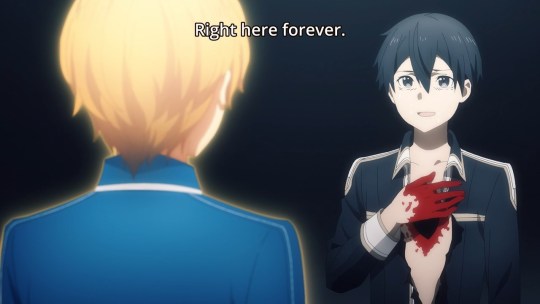
Personal thoughts:
- I find it interesting that Kirito is very apt for 2 different roles in the Little Red Riding Hood and The Little Prince, more than any roles with other heroines. In Aincrad/Progressive he is the hunter who managed to protect the Riding Hood Asuna from the wolves and in one way or another lead her to her own happy ending. In Alicization he is the best friend to the Prince Eugeo, he wanted to show the Prince the world and lead him to happiness too, but ended up having to watch his Prince walking to his own death.
- Mother's Rosario is treated as a side story in the original Web Novel and not a full-blown arc, so it doesn't have classic references. But Reki said in an interview along with the author of yuri manga/anime Bloom Into You that it's the most yuri-esque story he has ever written (despite not being technically yuri).
#Sword Art Online#SAO#Kirito#Asuna#Yuuki Asuna#Leafa#Recon#Kirigaya Suguha#Nobuyuki Sugou#Shinkawa Kyouji#Sinon#Asada Shino#Eugeo#Alice Zuberg#Alice Synthesis 30#SAO Meta
152 notes
·
View notes
Photo

Actors Ichikawa Danjūrō II, Fujimura Handayū II, Katsuyama Matagorō, and Sanogawa Mangiku, Torii Kiyonobu, 1719, Minneapolis Institute of Art: Japanese and Korean Art
Capitalizing on the public's fascination with a sensational double suicide by a pair of star-crossed lovers in Osaka in 1703, Chikamatsu Monzaemon wrote Sonzaki shinjū (Double Suicide at Sonezaki) and managed to have it performed at the Takemoto Puppet Theater later that year. It was later adapted to the Kabuki stage. The story recounts the ill-fated love affair between the famous prostitute Ohatsu and her true love, Tokubei. Kiyonobu designed this print to commemorate the New Year's performance of Sonezaki Shinjū at the Nakamura-za Theater in 1719. The lively composition shows Tokubei peering wistfully at Ohatsu from behind another woman. Kiyonobu masterfully contrasts the fluid, curvaceous lines that he uses to define the figures, with the geometric, architectural background. Size: 8 1/4 × 11 7/16 in. (21 × 29.1 cm) (image, sheet, horizontal chūban) Medium: Woodblock print (urushi-e); ink on paper, with hand-applied color, nikawa, and metalic flakes
https://collections.artsmia.org/art/8176/
10 notes
·
View notes
Text
Double Suicide of Sonezaki
Double Suicide of Sonezaki
Suicide has long been used as a form of social protest in Japan. In this film, set in 1703, samurai culture is being transformed by the emergence of a new merchant class. Elements of the social contract are beginning to unravel, and some unscrupulous people took undue advantage of these changes before the social order was re-created. In this story, a rich merchant gives his clerk an I.O.U.…
View On WordPress
0 notes
Text
Sebaciel and “Love Suicide”
(cw: suicide, violence, underage relationship, canon-typical dark themes) A meta about interpreting the first season of Kuroshitsuji’s anime as a Sebaciel love suicide story. In the centuries-old Japanese genre of love suicide stories, lovers caught in a forbidden romance escape their troubles by committing suicide together, preserving vows of love through death. Kuroshitsuji clearly follows many conventions of love suicide stories, and so we can view Ciel and Sebastian as lovers who commit a double suicide, even undergoing extended journeys to reach their place of death, as is typical in love suicide stories. In this interpretation, Kuroshitsuji’s characters preserve their vows-- the stipulations of a Faustian contract-- through a love suicide of their own. Specifics below (with citations and everything! There's also a tl;dr, because this got long):
Part One: The “Love” I and many others have already identified instances of Sebaciel subtext in the first season of the anime, so I won’t talk about those at length. Here are a couple highlights:
The implication that Ciel is “fonder” of Sebastian than of his dead parents+the near-kiss in “That Butler, Ghost Illusion”
The corset scene (scholar Anna Maria Jones wrote more extensively about the subtext here in her article "The Victorian Childhood of Manga: Toward a Queer Theory of the Child in Toboso Yana's Kuroshitsuji”)
The second anime opening
Part Two: The “Suicide” Kuroshitsuji suggests that a sort of “love” exists between Ciel and Sebastian, yet it is not as obvious that a mutual suicide occurs. The anime heavily implies that Ciel dies in the moments after its ending, yet it is likely Sebastian, advancing with a predatory smile, who literally slays him. Taken alone, this is a murder scene, not a suicide. The previous episodes, however, establish Ciel as an agent of his death. After all, Kuroshitsuji does not immediately commit itself to a love suicide ending, and it instead presents Ciel with multiple courses of action, flirting with other potential outcomes. Ciel makes clear that he has agreed to being killed by Sebastian by systematically rejecting these alternatives. For instance, even in the very first lines of the show, Sebastian tells Ciel that humans who contract with him will never go to heaven and then poses a question: “I’ll ask you again: do you wish to make a contract?” This opening scene indicates that Ciel makes an informed, deliberate decision when he forms the contract. But that's not necessarily a real choice, you might think. Being killed by cultists isn’t a valid option for a scared little kid. Later on, the first season of the anime-- even more so than the manga, perhaps-- goes out of its way to give Ciel other options. Still, he turns down at least two clear chances to reject his demon:
Angela tries to help Ciel give up his revenge, back when she seemed relatively sweet, before she revealed her "angel of massacre" side. There would have been some body horror involved, but I think this was still the best chance to escape the contract that Ciel's ever gotten. He apparently turned it down because he wanted to keep his "hatred" and complete his revenge, more than because the body modifications grossed him out.
In the second to last episode, while Sebastian's temporarily ditched the contract, Undertaker informs Ciel that he's doomed to die soon. Ciel could choose to ignore this warning entirely. He could choose to take it into account but fight his death by staying on the apparently safe boat he's currently on, or by sticking to his servants for protection after disembarking in London. And even if he were totally convinced that he can't escape an imminent death, he could choose to die while participating in rescue efforts and sacrificing his doomed life to help someone else, or while wandering aimlessly through London and waiting for a burning building to collapse on him, or while doing a thousand other things. Instead, he believes the warning, plunges into the ruins of London alone and tries to single-handedly complete his revenge, explicitly wishing to act in a manner that would impress Sebastian. Sebastian is indeed impressed, and he comes running back to complete the contract and then kill his master. Ciel does not seem the slightest bit upset by this turn of events.
To sum up, Ciel actively pursues the contract with Sebastian, and so I think he inflicts his own death, even if he does not deal the final blow. Thus, I argue that we can interpret Ciel's death as a suicide. Sebastian's suicide isn't a clear-cut matter either, since this near-immortal demon is at no risk of literally expiring when his human master does. However, as his witty catchphrase states, Sebastian is “akumade shitsuji”-- “a demon and a butler,” or “a butler to the end.” Indeed, he shows deep dedication to his role as a butler, taking pains to act in-character even in extremely risky situations when no other characters observe him and denouncing his demonic body as “unsightly, disgusting, [and] repulsive” compared to his human appearance. Clearly, Sebastian has grown attached to his butler self, and so he commits a sort of metaphorical suicide when he gives that part of himself up at the show’s end. Part 2.5: Who's Chikamatsu? In the 17th century, a playwright named Monzaemon Chikamatsu wrote lots of plays about love suicides-- often based on real-life events-- and, as far as I can tell, these plays are still considered important and influential works within the love suicide genre. In parts 3 and 4, I will highlight parallels between parts of Kuroshitsuji and passages from two of Chikamatsu's most popular love suicide plays-- Sonezaki Shinju and Shinju Ten no Amijima. Part 3: The "Journey" For centuries, Japanese stories have commonly featured a michiyuki, “a literary set piece” describing an important journey. Michiyuki scenes became quite popular in Chikamatsu’s love suicide stories, where the journeys would bring the lovers to the places where they intended to die (Miner 289). The ending of Kuroshitsuji also revolves around journeys, as Ciel and Sebastian metaphorically approach the end of their contract and literally travel to an otherworldly realm where the final death scene takes place. In Kuroshitsuji, these metaphorical and literal journeys parallel a love suicide play’s in several aspects, exemplified by the michiyuki scenes from the last acts of Chikamatsu's Sonezaki Shinju and Shinju Ten no Amijima. Kuroshitsuji’s metaphorical michiyuki begins near the start of the season’s second half, when it changes the music and art of its ending credits. In the fourteenth episode, the credits’ tone suddenly turns solemn, indicating that the characters have embarked on a metaphorical michiyuki towards the end of the contract. The background music switches from "I'm Alive," an upbeat rock song, to the semi-operatic “Lacrimosa”-- “Tearful” in Latin. On a general level, “Lacrimosa” alludes to the michiyuki right from its opening line, “arta via.” The Latin “via” is roughly equivalent to “michi,” meaning “road,” “way,” and “journey,” and the line as a whole can be translated as “a narrow road”-- easily a reference to the michiyuki. Later lines more firmly establish “Lacrimosa” as a song about a journey: “I move through the blue night’s stillness. Lacrimosa! I want to love once again the dazzling world that crumbled in the distance (translation from the official subtitles on Funimation's Youtube channel)." In this section, the speaker is both physically traveling and metaphorically leaving behind the brighter world of the living. Voila! Michiyuki. Now let's talk more specifically about Chikamatsu. "Lacrimosa" happens to integrate two key features of the poem-song recited during Sonezaki Shinju's michiyuki (quoted and translated in Miner 73). Here's a long-ish quote from the play, which I'll break down further:
"Pipe by well pipe-- The pipe well gives forth water-- That once ran clear-- But now with salty tears It starts to soil And on their moisted sleeves the moon-- Also starts to cloud-- The morning clouds and evening dews At the Cove of Evanescence where the hollowed boat-- Tells that they will lose themselves although they knew this, too . . ."
To start off, “Lacrimosa” echoes Sonezaki Shinju’s michiyuki when it speaks of moonlight and mourning: “The moonlight that reveals sorrow was coldly illuminating/the despair and the future which grew intimate in the dark.” In Japan, moonlight is associated with transience, and Chikamatsu played on this same symbolism. Sonezaki Shinju uses “an ages-old association, [in which] the tears are thought to be on the sleeves that wipe their eyes and therefore glisten in the moonlight, which is fading, along with their lives” (Miner 73).
The art that accompanies “Lacrimosa” shows further resemblances to Sonezaki Shinju’s michiyuki scene. The play refers to an “utsubobune,” a boat made from a hollowed-out tree and associated with death (Miner 74). Does this sound familiar?

(Look, more moonlight!) And yep, Kuroshitsuji’s credits show Sebastian rowing a hollow, wooden boat while Ciel lies inside, outstretched and apparently lifeless. Clearly, the second version of Kuroshitsuji’s ending credits alludes to the michiyuki, incorporating specific elements linked with classic michiyuki scenes such as Sonezaki Shinju’s. In Kuroshitsuji’s last episode, Ciel and Sebastian's symbolic journey moves out of the credits into the main plot, and the pair undertakes a literal voyage that closely echoes the last act of Shinju Ten no Amijima. Both Kuroshitsuji and Amijima feature a poetic and surreal michiyuki scene that follows a river, since love suicides are often connected to watery settings (Shively 43 and Miner 74). Here's a shot from Kuroshitsuji's michiyuki scene:

(Side note- this episode's title is translated as "His Butler, Fluent," which doesn't make much sense unless I interpret "fluent" as "flowing," as if he's flowing along the river . . . and that would serve to really emphasize the importance of this michiyuki scene!). During both journeys, the characters pass a series of bridges; the first such bridge mentioned in Amijima is “Tenjin Bridge,” or “Heavenly God Bridge,” while the last bridge to appear in Kuroshitsuji bears the similar name “Tenshi Bridge,” or “Angel Bridge” (Chikamatsu 91). Maybe that's a coincidence, or maybe it's an explicit allusion . . . At any rate, bridges-- especially ones whose names have such clear spiritual connotations-- carry symbolic weight, and they may here represent a crossing from the land of the living to the realm of the dead. Indeed, characters in both works explicitly allude to such a crossing. In Amijima, the male protagonist Jihei remarks that, “The farther we go the closer we get to the road to Hades.” In response, his mistress Koharu asks, “Is this road already Hades (Chikamatsu 92)?” Likewise, Kuroshitsuji’s michiyuki brings the protagonists to a misty otherworld after they pass Tenshi Bridge in the hollow boat previously shown in the credits, at which point Ciel asks Sebastian whether he is already dead. In both works, the michiyuki positions the characters at an ambiguous border between life and death. The very end of Kuroshitsuji’s journey scene also parallels the passage immediately following Amijima’s michiyuki. In Chikamatsu’s play, Koharu reminisces about the people she has leaves behind, remembering that the double suicide will break the heart of Jihei’s wife, Osan (Chikamatsu 93). Similarly, Ciel thinks of the world he has left while memories of his life literally appear as film reels floating in the river, and he and Sebastian predict that Lizzie, his fiancée, will grieve for him. However, both characters give up those reflections on their past lives and on the abandoned third members of their respective love triangles at a clear turning point. Koharu cuts her hair, becoming like a “Buddhist monk” and thus freeing herself from worldly obligations (Chikamatsu 94). In Kuroshitsuji, the water turns clear, and Ciel looks up to a crescent moon with its connotations of impermanence and declares he is “just Ciel Phantomhive,” doffing the titles of “earl” and “Watchdog” that defined him for so long. In these dramatic moments, both characters mentally sever their bonds to their previous life and permanently surrender themselves to suicide. Part 4: The "Love Suicide" At the conclusion of the michiyuki, the characters of Kuroshitsuji and Amijima arrive at their chosen places of death and commit suicide, in final scenes that once again closely mirror each other. For instance, Ciel resembles Koharu-- they're both the younger, seemingly more feminine members of their pairs-- as he considers the different fates of his body and soul. Koharu muses that, “Even if we die in different places and these bodies are pecked at by kites and crows, I ask only that our two souls be bound together and go together to hell or to Paradise” (Chikamatsu 93). In a remarkably similar scene, Ciel glances at a black bird of prey, likely a raven or crow, and orders Sebastian to let it finish off his corpse, once the demon has consumed his soul and perhaps tied their damned spirits together by this consumption. Thus, both characters dismiss the importance of their physical forms, instead emphasizing the souls that may now be joined to their partner’s in an eternal afterlife.

(These crow lines are freakishly close!) Ciel’s behavior further imitates Koharu’s as the moments of their deaths approach. Both characters face their ends calmly, with minimal carrying-on; Ciel refrains from crying and wears a neutral expression even from the start of the michiyuki, while Koharu conquers her initial tears and replaces them with a smile (Chikamatsu 95-96). Thus, the characters project a calm resolve that might almost justify their suicides, specifically in the eyes of a Japanese audience (Miner 74). Moreover, the two characters instruct their partners to brutally kill them, taking charge of their deaths even without dealing the final blow. Both Sebastian and Jihei initially hold back from violence-- Sebastian assures Ciel that he will be as “gentle” as possible when taking his soul, while Jihei’s blade falters as tears blur his vision. Ciel delivers a surprising response: “Go ahead and be brutal. Etch the pain deep into my soul as proof that I lived.” Similarly, Koharu insists that Jihei “hurry” and thus inspires him to stab her, as the narrator observes that “it is the woman who has the strength to spur him on” (Chikamatsu 96). Though these two characters seem to have less power in their relationships and are killed by more physically able partners, they claim agency in their final seconds, directing their own deaths. Sebastian and Jihei also demonstrate similarities in their concluding scenes, treating their partners with apparent tenderness even as they prepare to murder them. Prior to stabbing her, Jihei pulls Koharu into an embrace and holds her close for some time (Chikamatsu 95). Sebastian also cares for Ciel in a surprisingly intimate manner. He first uses his lips to pull off his glove-- an article of clothing which Yana Toboso likens to underwear-- and, with his now-bare hand, softly strokes Ciel’s hair, brow, and cheek (“エロい”). He then leans in towards the boy’s mouth, implying that he may extract his soul through a kiss. In this way, the two characters exhibit a romantic gentleness that contrasts strikingly with the violence they are about to inflict. Finally, the music that ends the two works imbues them both with a sense of spiritual transcendence, slightly tinged with tragedy. In Amijima’s ending lines, the sole reciter chants that his characters reach “Buddhahood and deliverance [from reincarnation] . . . In the eyes of all [who see it] there are tears” (Chikamatsu 96). This ending elevates the suffering of two rather ordinary characters to near-mythical proportions (Miner 74-75), yet it then states that this “deliverance” is no happy ending and that spectators still weep over the tragedy.
Kuroshitsuji likewise infuses its last moments with somewhat contradictory transcendental and tragic overtones, using an excerpt of a Latin song, “Si Deus Me Relinquit,” or “If God Has Abandoned Me.” While the anime previously plays this theme over a variety of sad scenes, it now presents it anew, omitting the usual choral elements and complicated orchestration and allowing a sole voice to recite the text. Remarkably, the song breaks off and leaves a sentence grammatically incomplete, drawing special attention to two words before buried in a longer line-- “nigram clavem,” or “the black key.” As Sebastian advances towards Ciel to take his soul, the show declares that this boy alone holds the “key” to unlock the afterlife, whether it be heaven or hell. He thereby escapes his troubled life and may reach eternal rest, yet the weak, solitary voice, echoing against silence as it sings of misery and damnation, reminds us that this scene is tragic nonetheless. The anime then fades to black, leaving the details of Ciel’s death ambiguous, so we can imagine bloody horror scene, a transcendental merging of two souls, or both at once.
In part through this careful use of music, both stories leave us with bittersweet feelings of both awe and mourning. Tl;dr- Kuroshitsuji draws on the same literary conventions, symbols, and associations that have been inspiring Japanese love suicide writers for centuries, and Ciel and Sebastian’s behavior in the final scene closely resembles that of the main couple in a famous love suicide play. Even if the creators of the anime did not refer specifically to the work of the great love suicide writer Chikamatsu-- and I really think they might have-- they most likely intended to situate their work within the broader genre of love suicide literature. Ultimately, Kuroshitsuji’s use of love suicide tropes heightens the romantic subtext we see elsewhere in Ciel and Sebastian’s relationship. Sources: Anna Maria Jones. “The Victorian Childhood of Manga: Toward a Queer Theory of the Child in Toboso Yana's Kuroshitsuji.” Criticism, vol. 55, no. 1, 2013, pp. 1–41. www.jstor.org/stable/10.13110/criticism.55.1.0001. Black Butler. Dir. Toyisha Shinohara. Perf. Daisuke Ono, Maaya Sakamoto, et al. A-1 Pictures, 2008-2009. Youtube. Funimation Entertainment. Web. <https://www.youtube.com/watch?v=fdglf3Tna0k&list=ELzukJMElcwvc>. Chikamatsu, Monzaemon. The Love Suicide at Amijima. Trans. Donald Shively. Print. Miner, Earl Roy., Hiroko Odagiri, and Robert E. Morrell. The Princeton Companion to Classical Japanese Literature. Princeton, NJ: Princeton UP, 1985. Print. Shively, Donald. "Introduction." Introduction. The Love Suicide at Amijima. 2-60. Print. Toboso, Yana. "Re: 26:エロい." Blog article. 落書き帳. 30 June 2013. Web. 15 Dec. 2016. <http://yanatoboso.tuna.be/?mon=2013/06>.
173 notes
·
View notes
Photo

The Insect Woman
A Fugitive From The Past
Under The Flag of the Rising Sun
She and He
An Inn At Osaka
The Scarlet Camellia
Double Suicide of Sonezaki
Mishima: A Life in Four Chapters
A Sun-Tribe Myth From The Bakumatsu Era
0 notes
Text

Meiko Kaji (梶芽衣子) accepting the award for Best Actress at the 1979 Kinema Junpo Awards for her role in Double Suicides In Sonezaki (曽根崎心中).
Scanned from Kinema Junpo (キネマ旬報), April 1979.
#Meiko Kaji#梶芽衣子#Love Suicides In Sonezaki#Double Suicide In Sonezaki#曽根崎心中#Kinema Junpo#キネマ旬報#scanned by me#magazine
36 notes
·
View notes
Text

Meiko Kaji (梶芽衣子) and Ryudo Uzaki (宇崎 竜童) in Double Suicide In Sonezaki (曽根崎心中), 1978, directed by Yasuzo Masumura (増村保造).
Scanned by me.
#Meiko Kaji#梶芽衣子#Yasuzo Masumura#Ryudo Uzaki#Double Suicide In Sonezaki#Love Suicides In Sonezaki#曽根崎心中#宇崎 竜童#増村保造#Sonezaki Shinju#press photo#scanned by me
15 notes
·
View notes
Text

Meiko Kaji (梶芽衣子) in Double Suicides In Sonezaki (曽根崎心中), 1978, directed by Yasuzo Masumura (増村保造).
Scanned from issue 133 of Art Theater (アートシアター).
#Meiko Kaji#梶芽衣子#Yasuzo Masumura#Love Suicides In Sonezaki#Double Suicide In Sonezaki#曽根崎心中#増村保造#Art Theater#scanned by me#magazine#press photo#sonezaki shinju
18 notes
·
View notes
Photo

Hisashi Igawa (井川比佐志) and Meiko Kaji (梶芽衣子) on the set of Double Suicide Of Sonezaki (曽根崎心中), 1978, directed by Yasuzo Masumura (増村保造).
#Meiko Kaji#梶芽衣子#Yasuzo Masumura#Hisashi Igawa#Double Suicide Of Sonezaki#Love Suicides In Sonezaki#Double Suicide In Sonezaki#曽根崎心中#増村保造#井川比佐志#behind the scenes
33 notes
·
View notes
Photo

Meiko Kaji (梶芽衣子) and Ryudo Uzaki (宇崎 竜童) in an advertisement for Love Suicides In Sonezaki (曽根崎心中), 1978, directed by Yasuzo Masumura (増村保造).
Scanned from a loose clipping.
#Meiko Kaji#梶芽衣子#Yasuzo Masumura#Ryudo Uzaki#Love Suicides In Sonezaki#Double Suicide In Sonezaki#宇崎 竜童#増村保造#曽根崎心中#scanned by me#ad#loose clipping
24 notes
·
View notes
Text
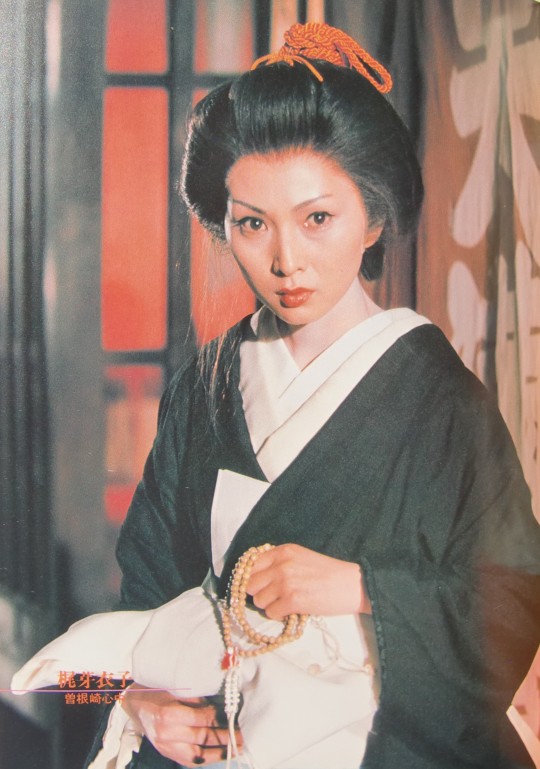
Meiko Kaji (梶芽衣子) in Double Suicides In Sonezaki (曽根崎心中), 1978, directed by Yasuzo Masumura (増村保造).
Taken from Nihon Eiga 1979 Cine Album (日本映画1979 シネアルバム).
#Meiko Kaji#増村保造#Yasuzo Masumura#Double Suicides In Sonezaki#曽根崎心中#Love Suicides In Sonezaki#magazine#Nihon Eiga 1979 Cine Album#日本映画1979 シネアルバム#press photo
39 notes
·
View notes
Photo

Meiko Kaji (梶芽衣子) in Double Suicide In Sonezaki (曽根崎心中), 1978, directed by Yasuzo Masumura (増村保造).
#Meiko Kaji#梶芽衣子#Yasuzo Masumura#Double Suicide In Sonezaki#Love Suicides In Sonezaki#曽根崎心中#増村保造#press photo#sonezaki hair
55 notes
·
View notes